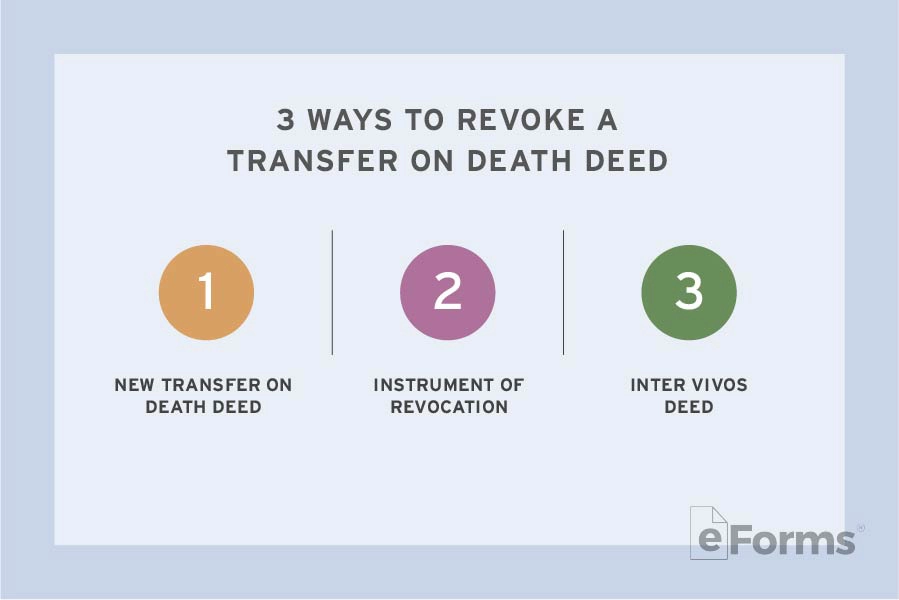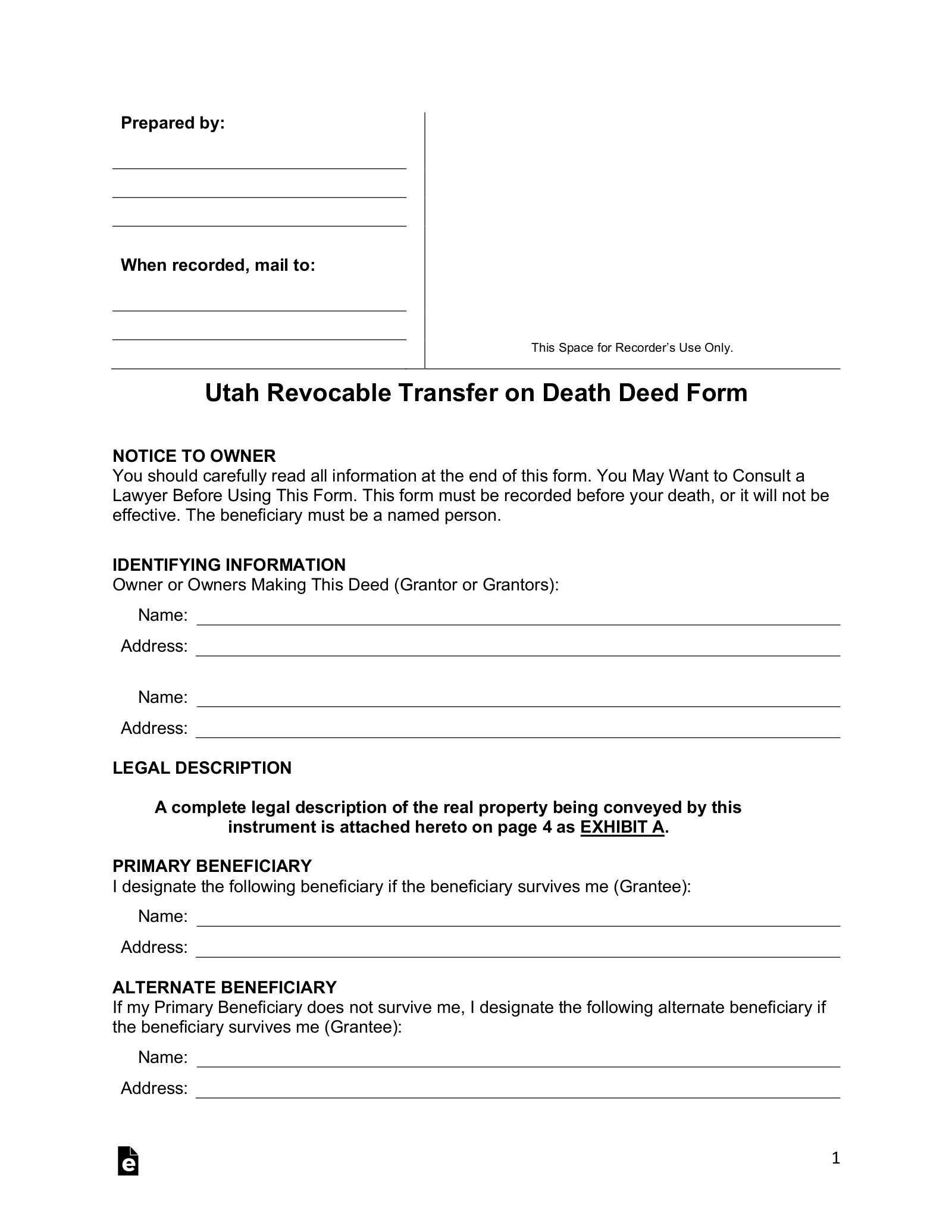Updated April 29, 2024
A Utah transfer on death deed allows the owner of real property to set up a transfer of their ownership to a designated beneficiary for when they die. It skips the probate process and can be revoked at any time while the owner is still alive. To be effective, it must be recorded with the office of the county recorder in the county where the property is located.
Table of Contents |
Requirements
- Notary: Required.[1]
- Witnesses: Not required
- Recording: Before the transferor’s death in the public records via the county recorder’s office of the county where the property is located.[2]
Legal Description
A legal description provides the exact boundaries and physical attributes to identify the real property. It typically follows the Public Land Survey System (PLSS), which divides land into townships, ranges, and sections. It also gives exact measurements of the property using fractional or metes-and-bounds descriptions.
This can be found on the property deed or by accessing deed records via the office of the county recorder in the county where the property is located.
Example
“Lot 4, Block 3, Highland Park Subdivision, according to the official plat thereof, filed in the office of the County Recorder of Salt Lake County, State of Utah.”
Revocation

A transfer on death deed can be revoked at any time while the transferor is alive. This can be done by using one of the following documents:
- A transfer on death deed that revokes the deed or part of the deed expressly or by inconsistency
- An instrument of revocation that expressly revokes the deed or part of the deed
- An inter vivos deed that revokes the transfer on death deed or part of the deed expressly or by inconsistency
For the revocation to take effect, it must be acknowledged by the transferor and recorded in the public records of the county recorder’s office in the county where the property is located.
If the TOD deed has more than one transferor, revocation by one transferor does not affect the interest of the other transferor.[3]
How to Record
After completing the form and getting it notarized, the transferor should take the TOD deed to the office of the county recorder in the county where the property is located. The county recorder will give instructions on how to make the form part of the official property records.[4]


